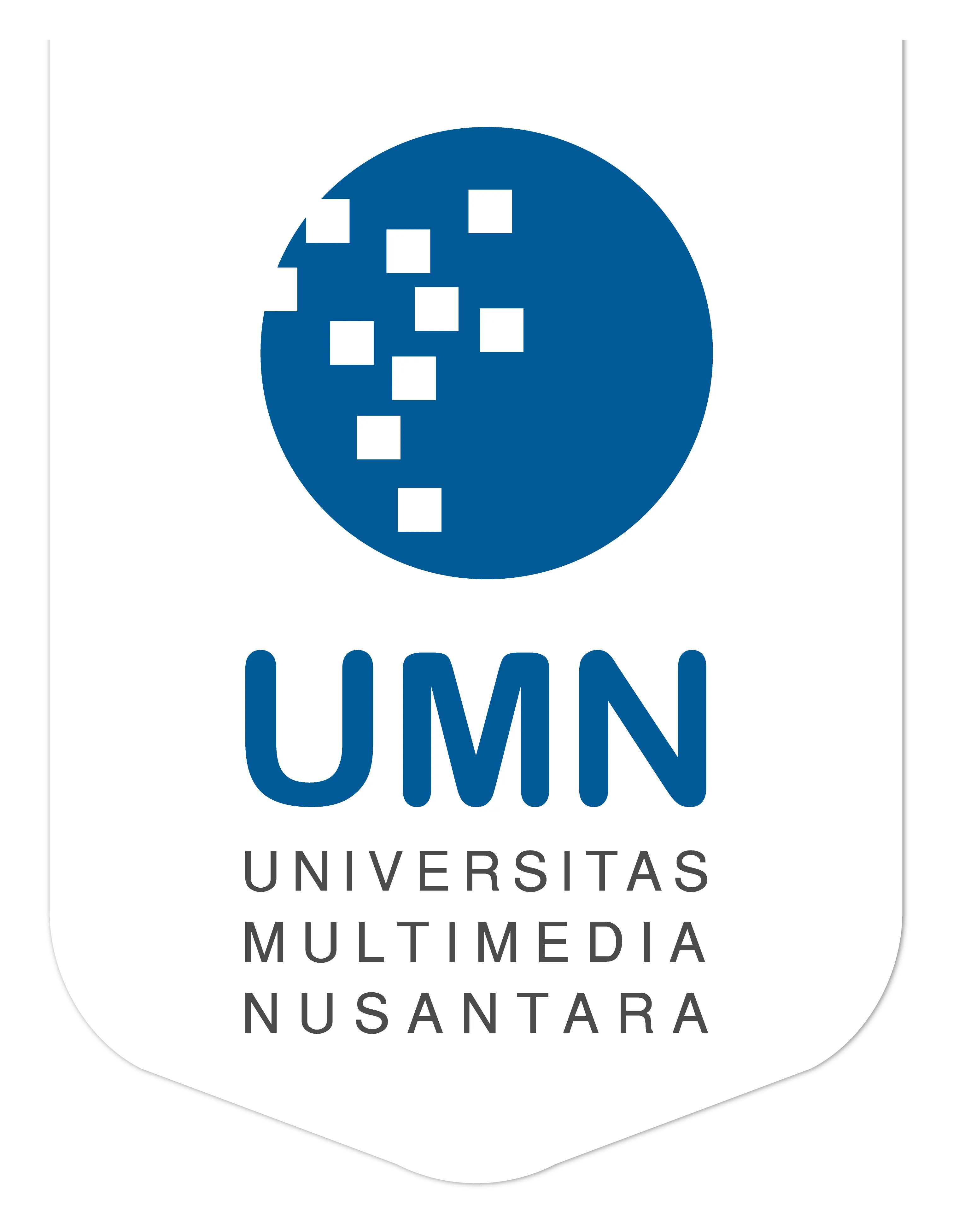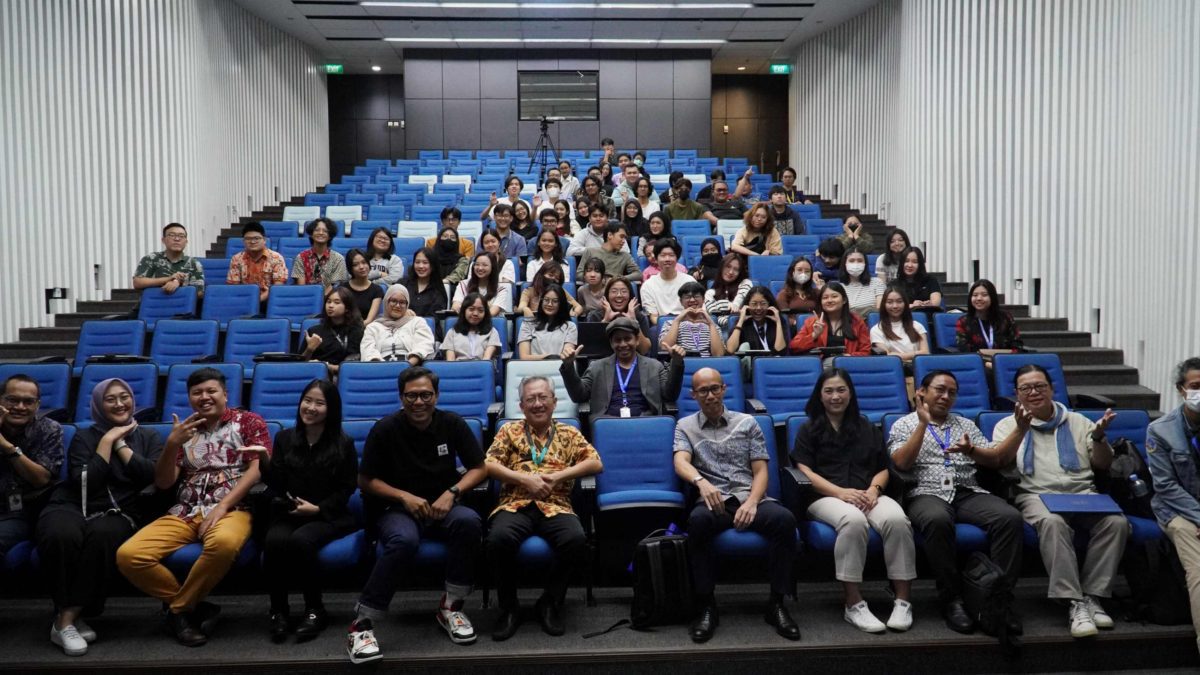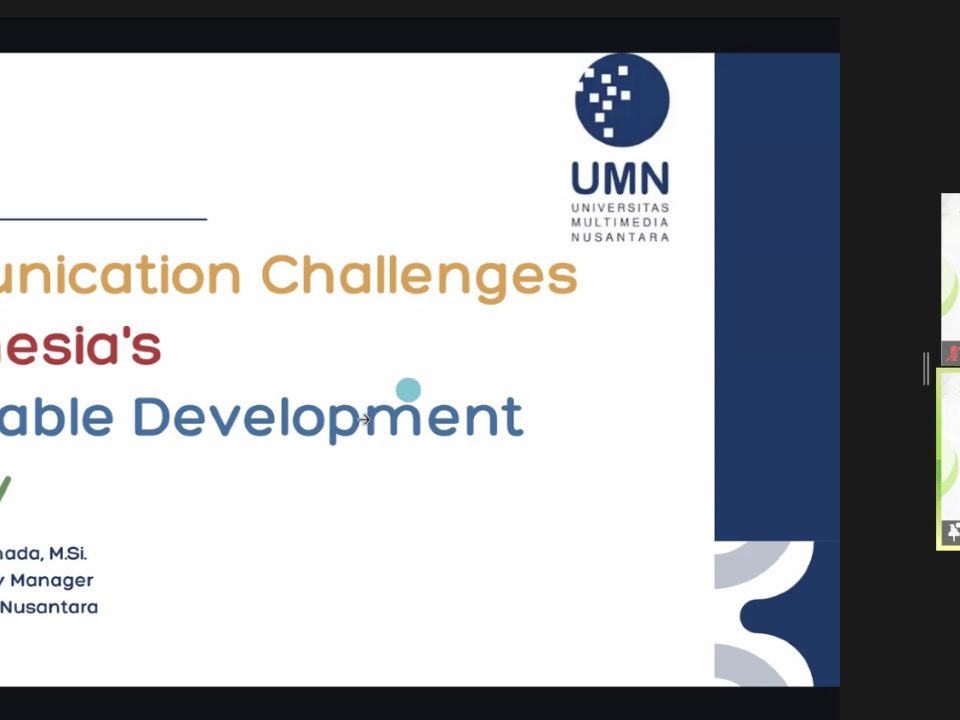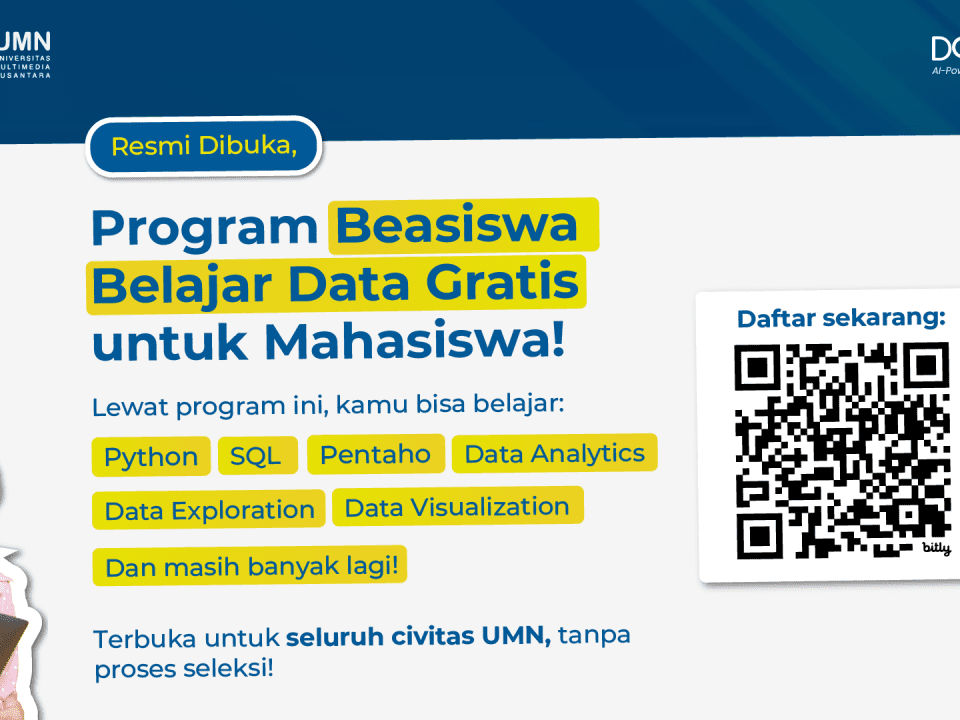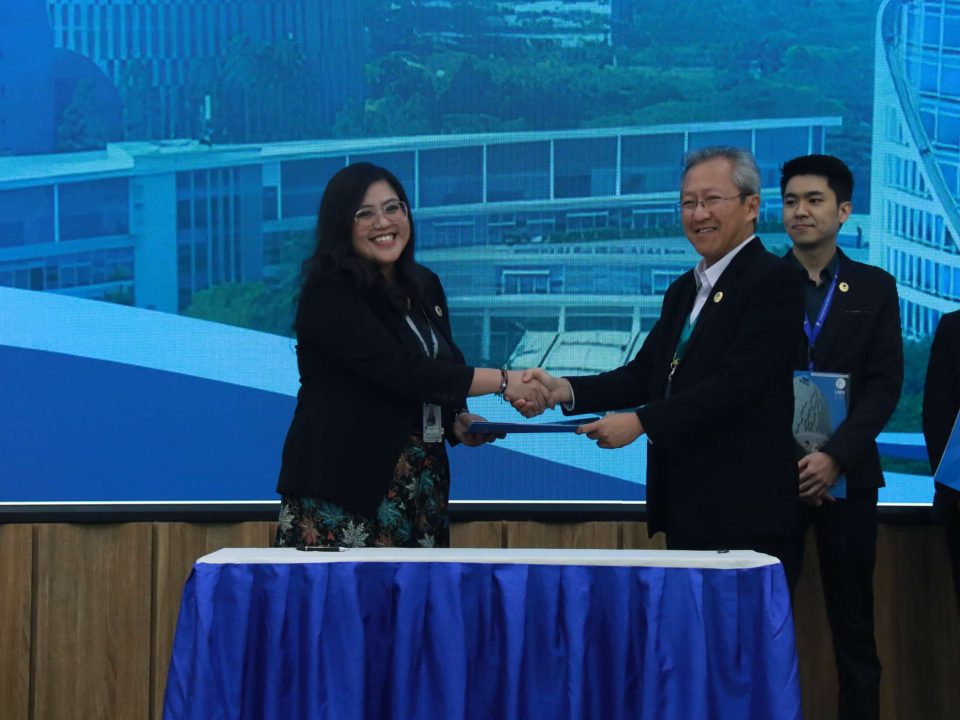
Going Global, UMN Achieves 4 Stars QS Stars University Rating
April 29, 2024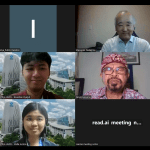
UMN Signs a MoU with Sakushin Gakuin University
May 3, 2024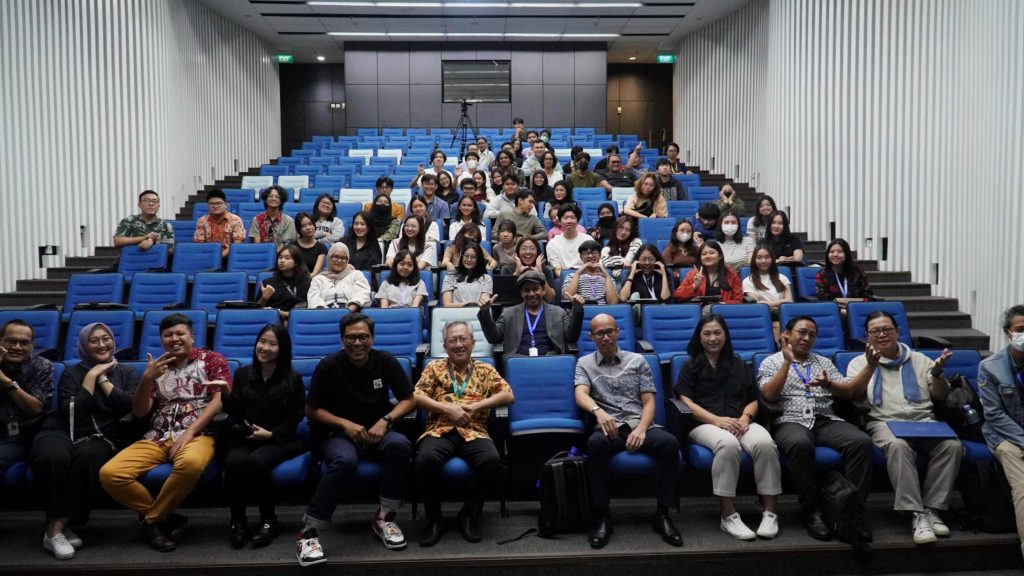
(Doc. Marketing Communications UMN)
TANGERANG – On the 18th of April 2024, the Communications Faculty of Universitas Multimedia Nusantara (UMN) conducted a seminar titled “Publisher’s Copyright: Advantages and Disadvantages for the Media Industry.” The seminar invited Prof. Andrew Dodd (Director of the Center for Journalism Advancement Studies, The University of Melbourne, Australia), Andy Budiman Kumala (CEO of KG Media), and Ignatius Haryanto (UMN Journalism Lecturer and Observer of Publisher Copyright Issues).
Impact of Digital Disruption: News Deserts, Unemployed Journalists, and Techlash
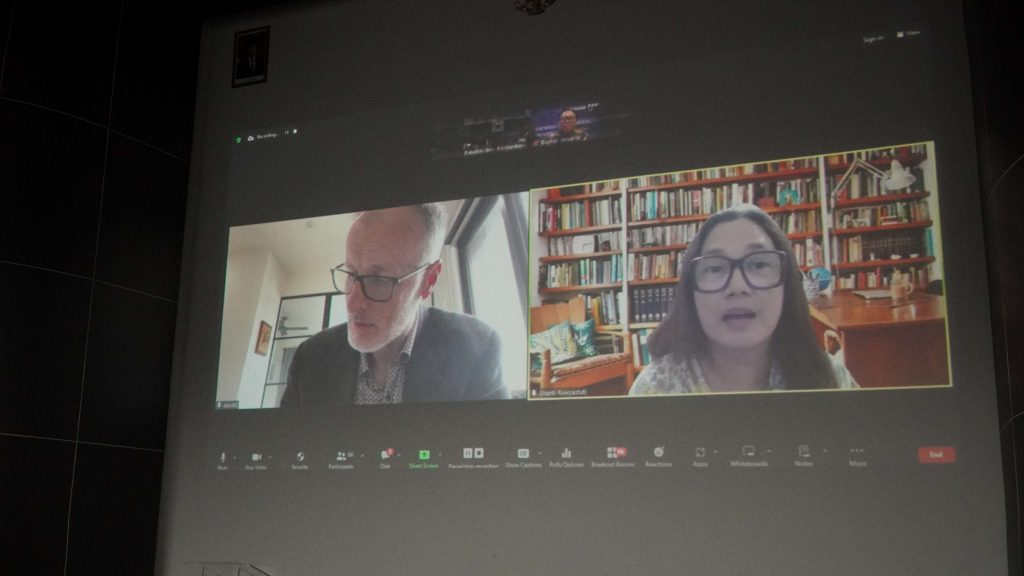
(Doc. Marketing Communications UMN)
Andrew stated that we are going through yet another wave of disruption. The internet and mobile media have affected how news is delivered, making it even more complicated to operate news media.
“The revenue streams that came into news media were very much questioned. It’s become increasingly challenging for news organizations to make money. Advertising markets have been taken away. Private media now struggle with large amounts of advertising migrating online,” Andrew said.
Andrew argues that we’ve barely managed to cope with those two waves of disruption. Now, we’ve fallen into our third wave, dealing with all the things that generative AI is doing to our media. He also shared an upsetting statistic. Referencing information from the book “Upheaval,” Australia lost 4,000 jobs in the news media.
“Our news companies consolidated and came together, and as a result of integrating and merging, we managed to shed lots of staff– so we lost lots of journalism staff. As a result, we created news deserts in Australia. We’ve got plenty of deserts already in Australia, but now we have news deserts, and they’re considerable,” Andrew shared.
Simultaneously, Andrew shared that something called the “Techlash” occurred in 2018, where everybody seemed to be turning their backs on the tech media companies. Techlash is when there’s a strong negative reaction against the largest technology companies.
Amazon, Google, Facebook, and others were being blamed for all sorts of problems in the delivery of journalism. This was around the time when there were allegations about all sorts of misinformation campaigns through Facebook and social media disrupting elections.
The News Media Bargaining Code: The Positives and Negatives
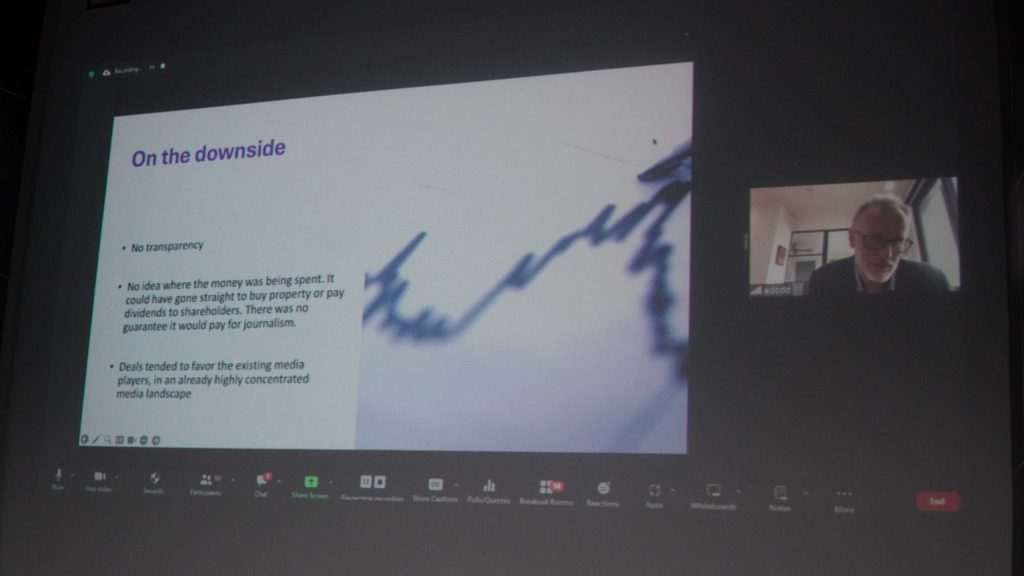
(Doc. Marketing Communications UMN)
Millions of Australian Dollars Were Invested In Australian News Media
According to the Australian Communications and Media Authority, The News Media Bargaining Code is a mandatory code to help support the sustainability of public interest journalism in Australia.
It will address bargaining power imbalances between digital platforms and Australian news businesses. The code enables eligible news businesses to bargain individually or collectively with digital platforms overpayment for including news on the platforms and services.
Andrew shared the positive effect of the code. He shared that over 30 commercial agreements were secured within the first year the code was passed.
“Google was paying something of 100 million Australian dollars a year; it could be around 110 million. And Facebook, when it came to the party, was putting up about 70 million Australian dollars a year. Several organizations started employing people. Guardian Australia was said to have employed something like 50 extra people,” Andrew said.
Many journalism graduates were also employed by media outlets that had money because of the deals done under the code. There was a sense of optimism.
RIP to The Facebook News Tab: Potential Huge Loss Australian Media Revenue
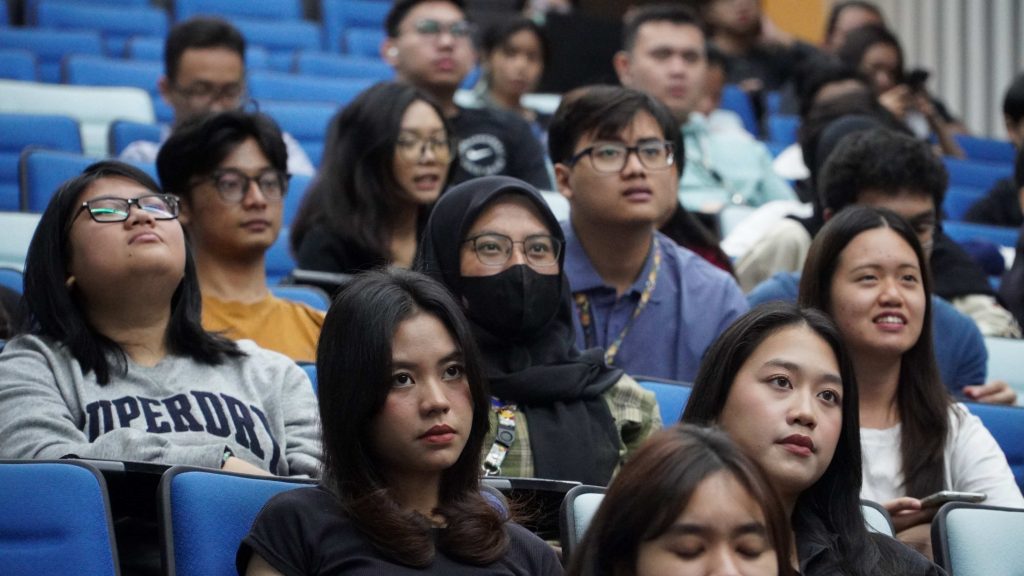
(Doc. Marketing Communications UMN)
On the downside, some people were pessimistic and worried, fearing what would happen if the money stopped. There was also a severe lack of transparency about where and how the money was spent.
“Under the terms of the code, the money could have been used by media companies to pay dividends to shareholders. It could have been used for anything except journalism. If all of this is about protecting journalism, why aren’t there guarantees that money that comes in is actually being directed that way?” Andrew shared.
Regardless of the deal, Andrew shared that Facebook (Meta) is walking away from the news. As reported by AP News, Meta will sunset Facebook News in early April in the US and Australia. Last year, The feature was shut down in the UK, France, and Germany. This is due to the criticism about how it handles misinformation and whether it contributes to political polarization.
Andrew shared that the Australian media sees this as a declaration of war. Many reports indicate that the Australian media are furious and have a vested interest in this because this revenue stream keeps what they do alive.
“News Corp is now saying it’s ready to sack lots of staff members as a result of this loss of revenue. So, we can expect another wave of redundancies in Australian media. This is terrible news for young graduates in journalism schools and democracy itself,” Andrew said.
The Current Solution
Andrew shared that alternatives to the code in Australia are discussed but not proposed, like a “public interest journalism tax rebate,” where the government will provide a tax rebate for the media to employ journalists if they can demonstrate they are doing public interest journalism.
In Canada, it is a reality. Canada introduced a “journalism labor tax credit” to benefit media employers or news organizations that can demonstrate that they are employing journalists. This ensures employment continues in public interest journalism and news media.
“Another option is what’s called the digital platform levy. This proposal would ensure that digital platforms pay a lump sum when operating in Australia. It also takes away the need for media to demonstrate that its content is being used by those platforms. It takes away all the negotiating and deal-making because it’s a lump sum that’s paid to the government upfront,” Andrew shared.
But it also recognizes that it’s now impossible to do business in the media without dealing with digital platforms because so many people view their news through digital platforms. So, it’s accepting that they can continue to stay by paying a social license to operate in Australia.
“We also know that quality journalism is a public good. But we’ve just ridden through two waves of disruption. We’re now facing a third wave, growing exponentially in scope, size, and speed. We also now know that we need government support and creative regulation to intervene to survive,” Andrew said, ending his presentation.
Indonesia Debuts “Publisher’s Rights,” Following Australia’s News Media Bargaining Code
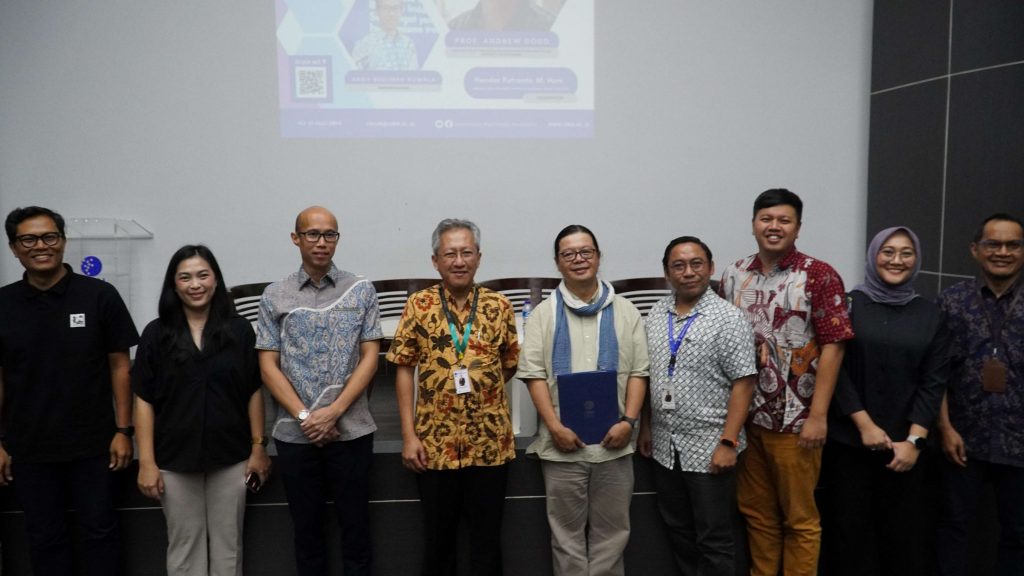
(Doc. Marketing Communications UMN)
In this opportunity, several Indonesian representatives discussed Indonesia’s “Publisher’s Rights” regulation. Publisher’s Rights is Indonesia’s version of Australia’s and Canada’s media code.
As reported by Kompas.com, President Joko Widodo (Jokowi) ratified Presidential Regulation Number 32 of 2024 on Corporate Responsibility of Digital Platforms to Support Quality Journalism. This regulation was promulgated on February 20, 2024, and will be in act after six months. The Publisher’s Rights are present to ensure media companies’ sustainability and realize quality journalism. The regulation is currently in the preparation/inception phase.
Andy Budiman Kumala, the Chief Executive Officer at KG Media Indonesia, and Ignatius Haryanto, UMN Journalism Lecturer and Observer of Publisher Copyright Issues, led the discussion. They shared insights about Indonesian media relating to the issue discussed by Andrew.
Andy shared that Indonesian media feels Meta’s decision to remove their news tab. “If we were to talk about 7-8 years ago, Facebook traffic sources were still 15% to 20% (for Kompas.com). Now it is less than 2%. Maybe only 1%, and it will continue to decline,” Andy said.
6 Months Preparation for The Publisher’s Rights: The Regulation Lacks Detail
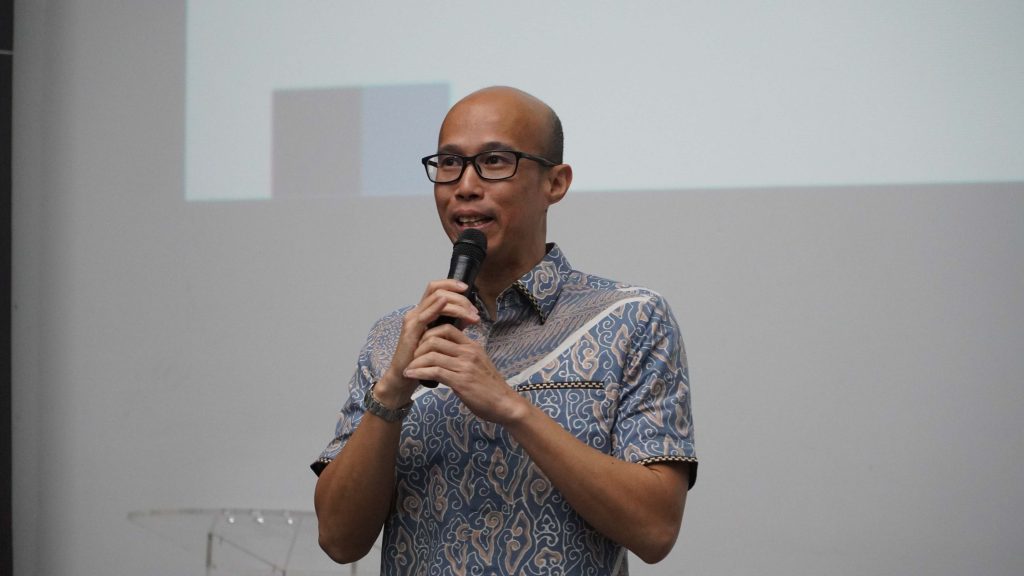
(Doc. Marketing Communications UMN)
When discussing the preparation for establishing the Publisher’s Rights law, the speakers shared that there are things that are odd in the preparation, and the regulation still lacks detail.
Starting the discussion, Andy shared that the government wouldn’t deal with the law, but a committee would be built. As the law relates to journalism, the government respects the Press Law (Undang-Undang Pers).
“The government should not be allowed to interfere in press matters. So, the press council was appointed to form a committee to enforce the platform’s obligations– like supervision and giving recommendations to the minister. If the platform is disobedient, it will be reported to the ministry. Also, if it has to be arbitrated and negotiation is not met, the committee facilitates the arbitration,” Andy said.
Adding to this information, Ignatius shared that the regulation will recruit a maximum of 11 committee members. 5 members will consist of Press Council members, and the rest will be members from the Ministry of Communication and Information Technology and other experts to maintain independence.
Ignatius feels that recruiting five members from the Press Council is too much. “5 people are already more than 50% of the members of the Press Council. The Press Council only has nine members,” Ignatius said.
Here’s what’s odd. There are five people appointed by representatives from the Press Council. The funny thing is that representatives of the Press Council can’t represent press companies.
“So, like, I can’t be on the committee. I believe this results from painstaking negotiations between the government and the platforms. Because the platform knows this is the ‘life’ of the regulation and committee. They want to ensure this committee is independent, not against the platform. This aspect can be confusing,” Andy said.
Another aspect discussed is that, compared to Australia’s media code, which has about 40 pages, Indonesia’s Publisher’s Rights only has ten pages. Andy and Ignatius said there are still plenty of details to consider so the rules can be enforceable. With the current Publisher’s Rights copy, it’s difficult to see what the future looks like.
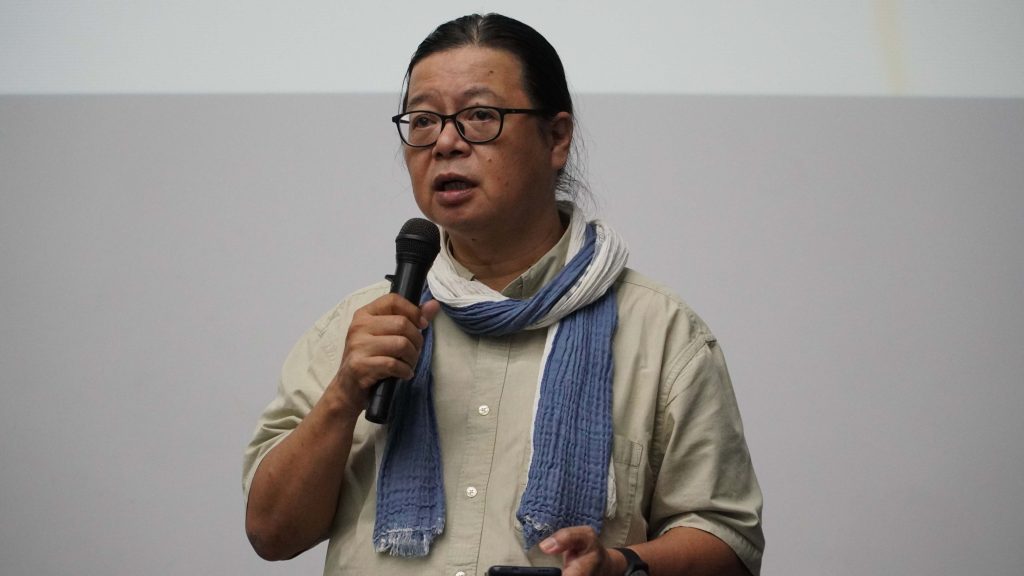 (Doc. Marketing Communications UMN)
(Doc. Marketing Communications UMN)
The future of journalism looks scary, especially for Journalism students. However, Ignatius said that the Publishers’ Rights regulation can be the solution to this issue.
“Have you guys thought of it, as journalism students, what your future looks like in this context?” Ignatius said. Though this situation looks worrisome and the regulation has uncertainties, Ignatius said it could provide plenty of positive outcomes, like what happened to Australia and Canada.
“We hope the Publisher’s Rights could provide a chance for the news media to hire journalists and to produce high-quality journalism,” Ignatius said.
On the bright side, Ignatius and Andy shared that Google is more lenient. Andy said that, unlike Meta, Google still tries to work with the news.
“For example, we want to find information regarding the earthquake in Taiwan. When it doesn’t appear in search results from credible sources, it will affect people’s perception of this search engine. The search engine is Google’s money machine. So, I assume that they still have an interest in news, unlike Facebook,” Andy said.
Ignatius said there is a rumor that Google has already made a deal far before the Publisher’s Rights regulation is signed. He thinks Google prefers to deal directly with each of the companies.
“You can enjoy the benefits of Publisher’s Rights. Like what Andrew has shared, the opportunities exist. We need to be innovative, look at any changes in the market, and see the available opportunities. We hope that there could be things we can take advantage of with the Publisher’s Rights,” Ignatius said, closing the discussion.
The seminar ended with a fruitful Q&A session between the speakers and the participants. We hope this seminar has provided the participants with valuable insights into the current issue and new regulations in journalism in Australia and Indonesia.
By Levina Chrestella Theodora
English translation by Levina Chrestella Theodora
Kuliah di Jakarta untuk jurusan program studi Informatika| Sistem Informasi | Teknik Komputer | Teknik Elektro | Teknik Fisika | Akuntansi | Manajemen| Komunikasi Strategis | Jurnalistik | Desain Komunikasi Visual | Film dan Animasi | Arsitektur | D3 Perhotelan , di Universitas Multimedia Nusantara. www.umn.ac.id
